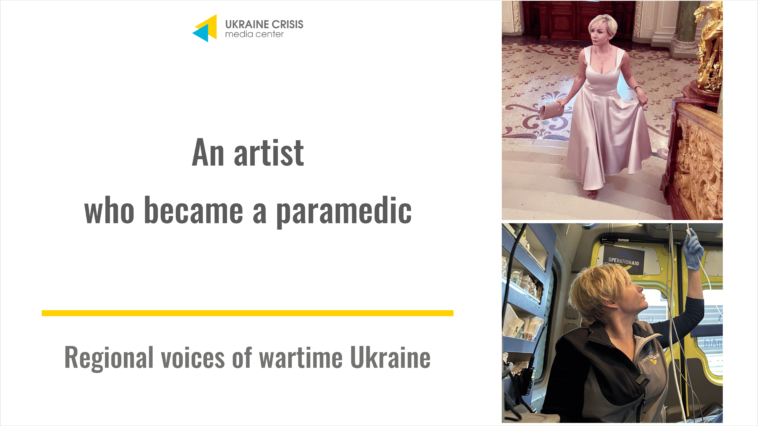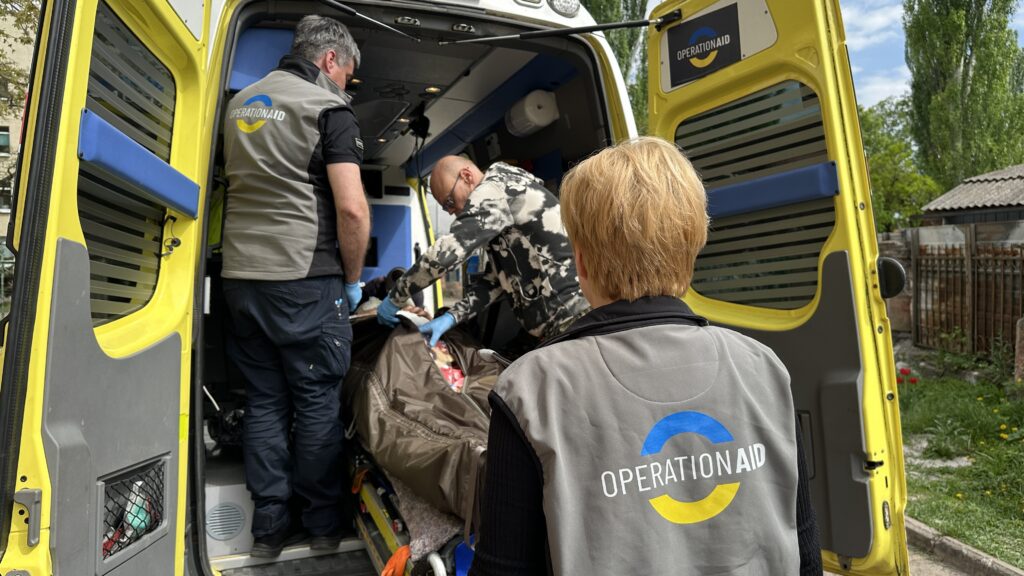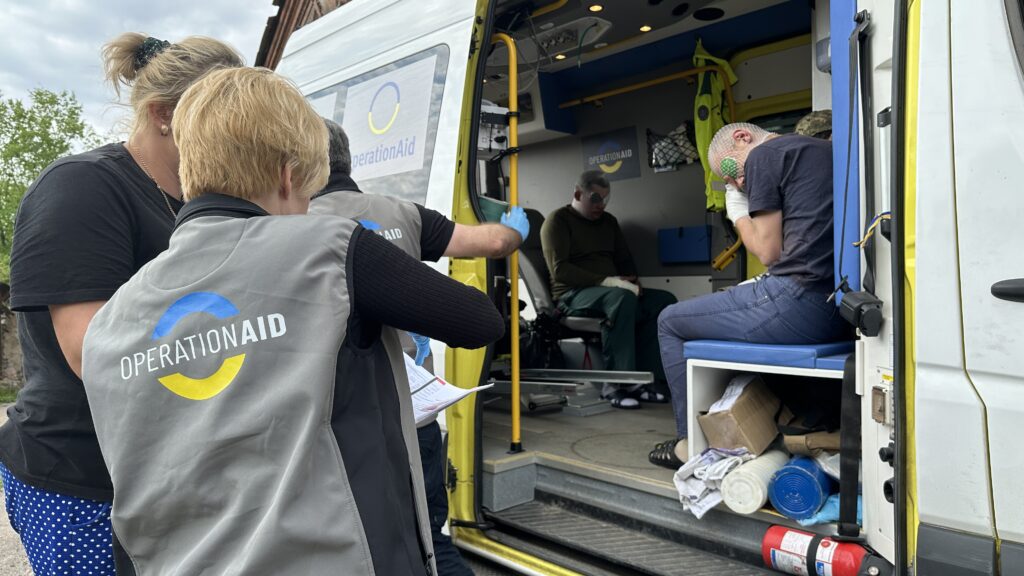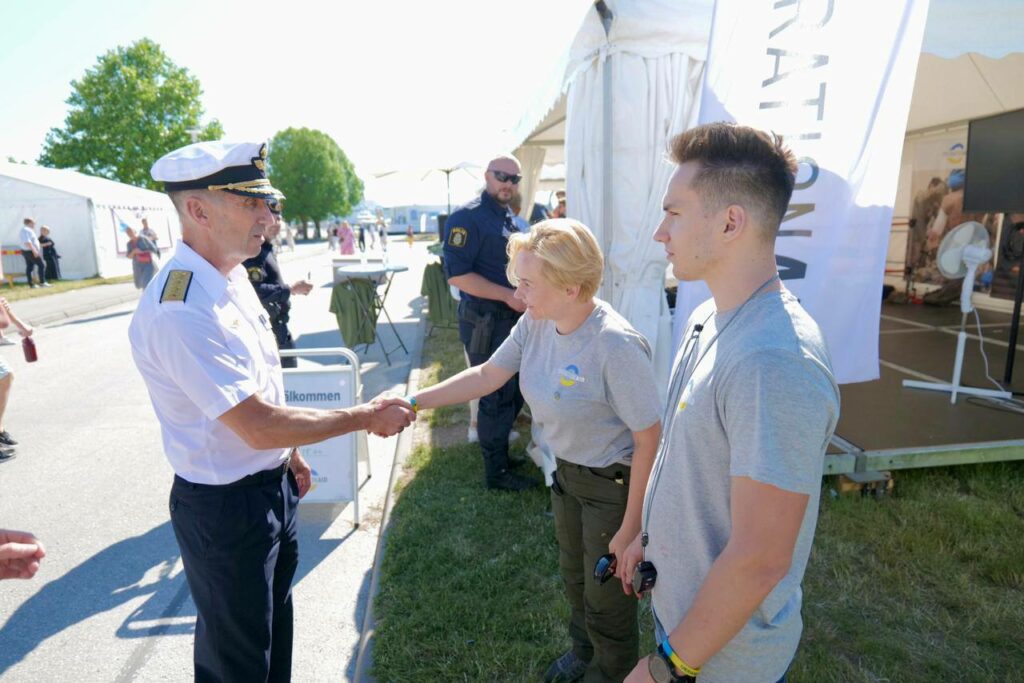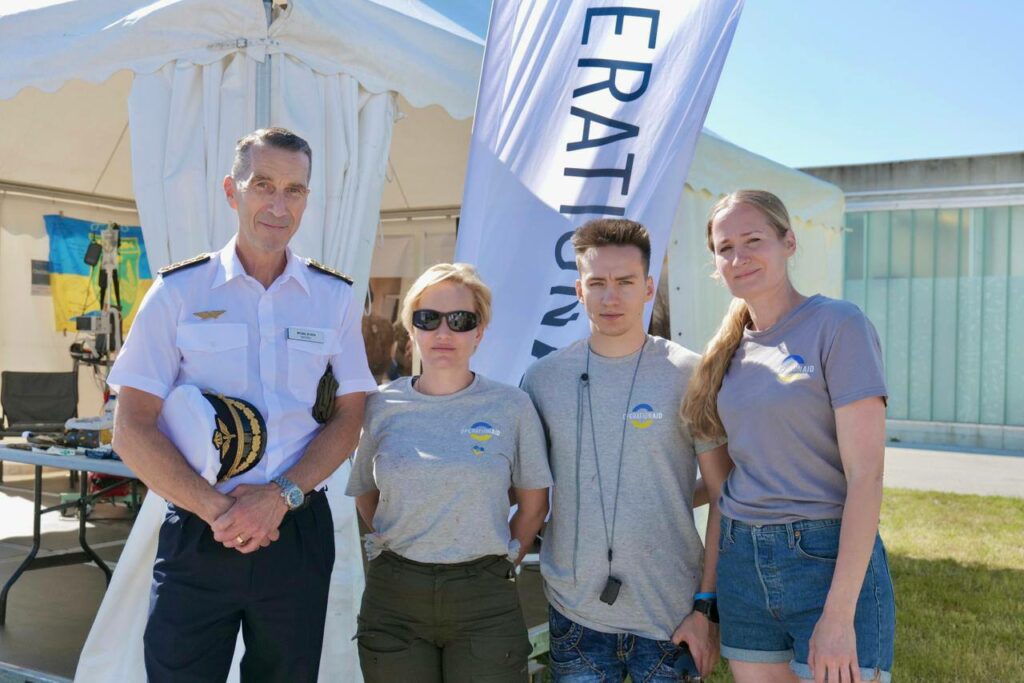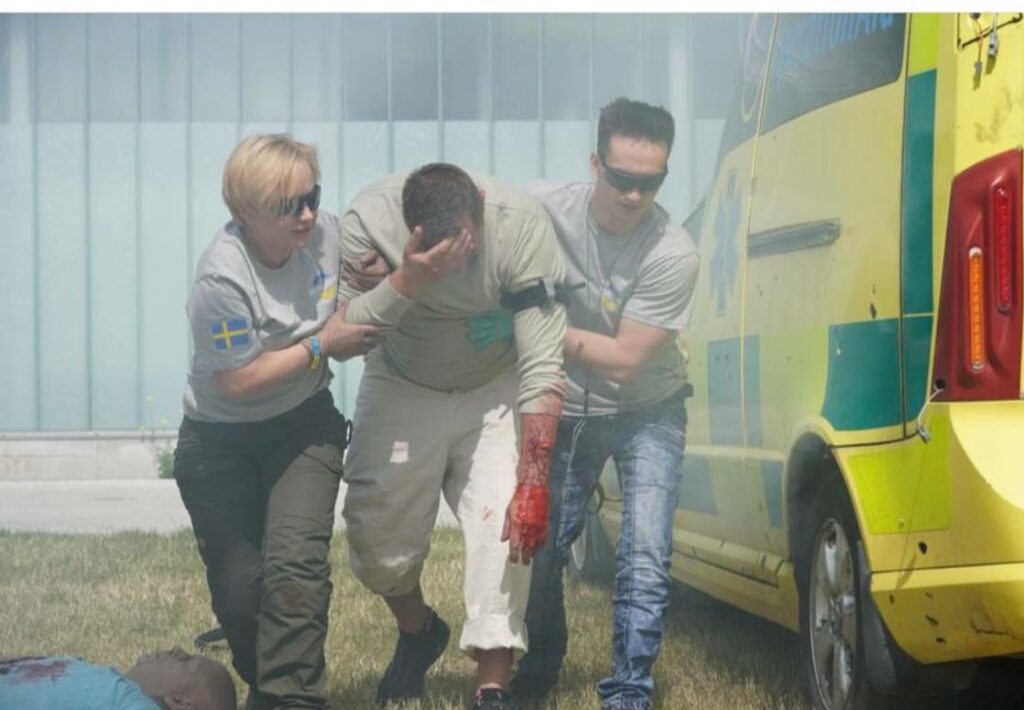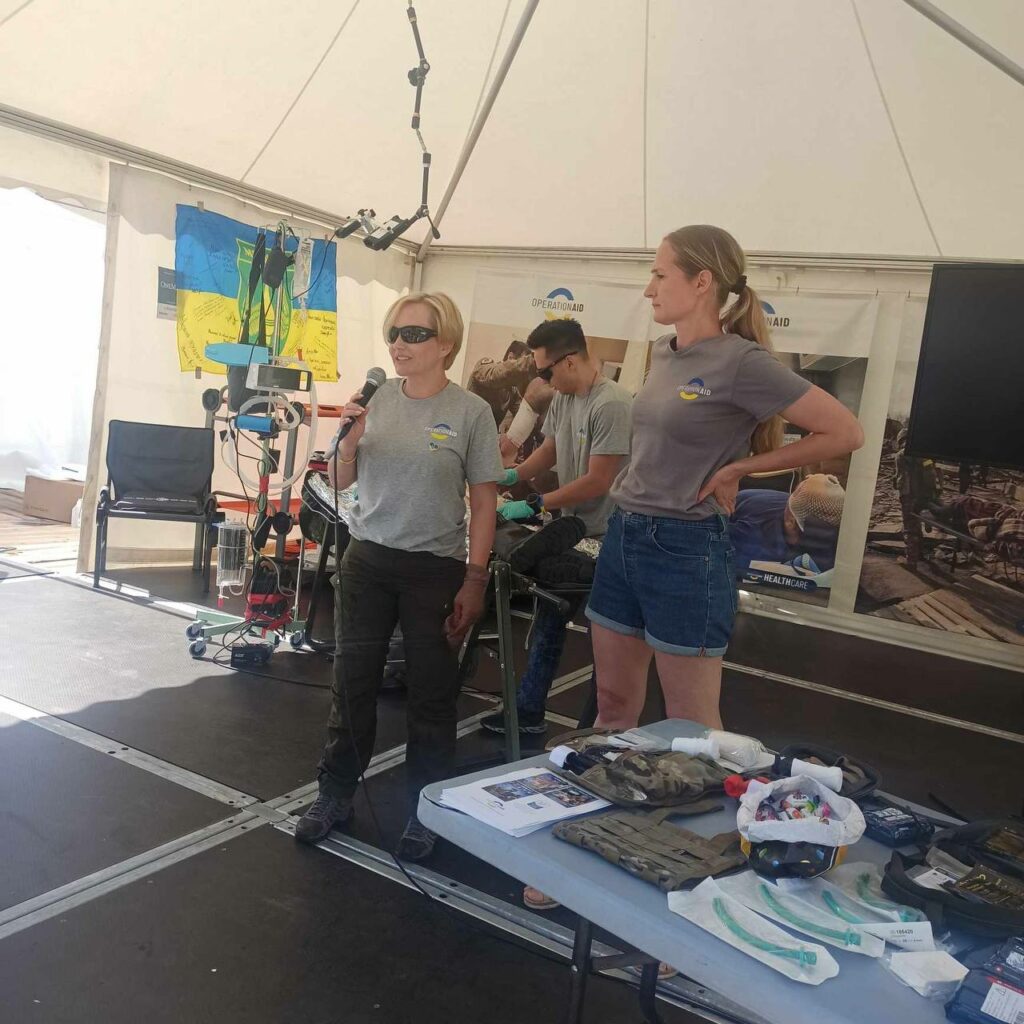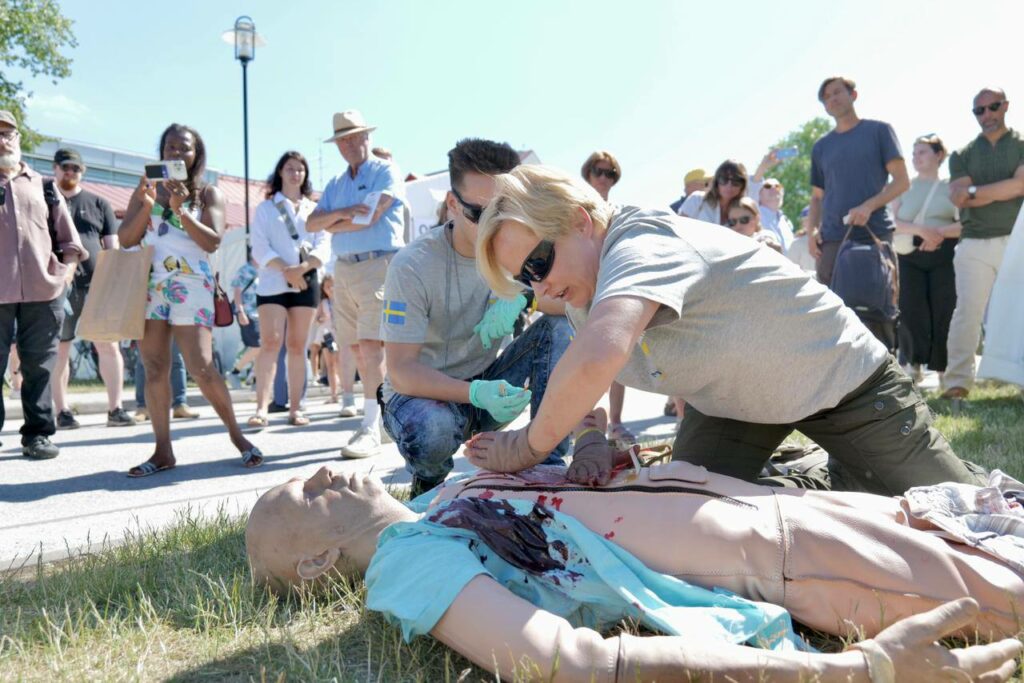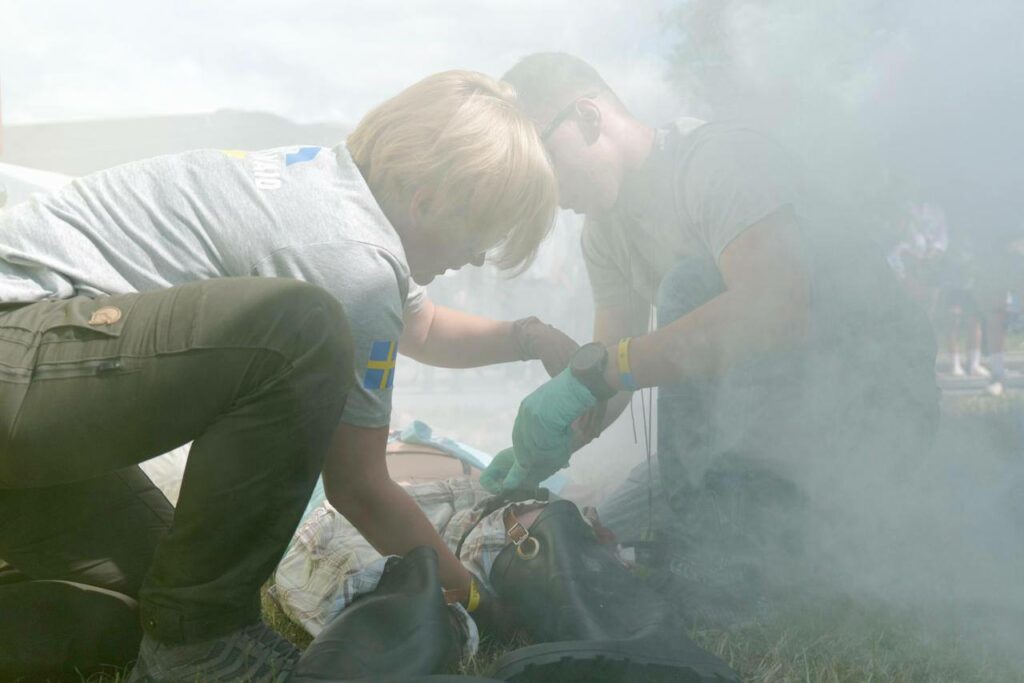“If you get to the medevac, we’ll help you out, you’re a fighter, everything will be Ukraine,” says volunteer and paramedic Yevhenia Kim. Before the full-scale invasion, the religious scholar and artist had other concerns. Now the war has pushed creativity out of her life, but filled it with even more miracles. It’s a miracle to remain human in inhumane conditions and live amid death. Apparently, this is how true artists are tested… In Ukraine, many of them have changed exhibitions to evacuation routes, searching for medicine and equipment for the army.
Before the full-scale war, Yevhenia Kim had the life of her dreams –traveling, international performances, and bohemian lifestyle. She says it was a completely different life, not like today: “I had a lot of hobbies, did shooting sports, and went dancing. I had my own art studio, we painted icons, participated in exhibitions, were presented on international markets. I loved traveling. I was committed to my work, and I also liked to go to some country for a few weeks, rent a car, just drive around, talk to people, learn about new cultures, because I’m a religious scholar, I’ve always been interested in inner life and worldview.”
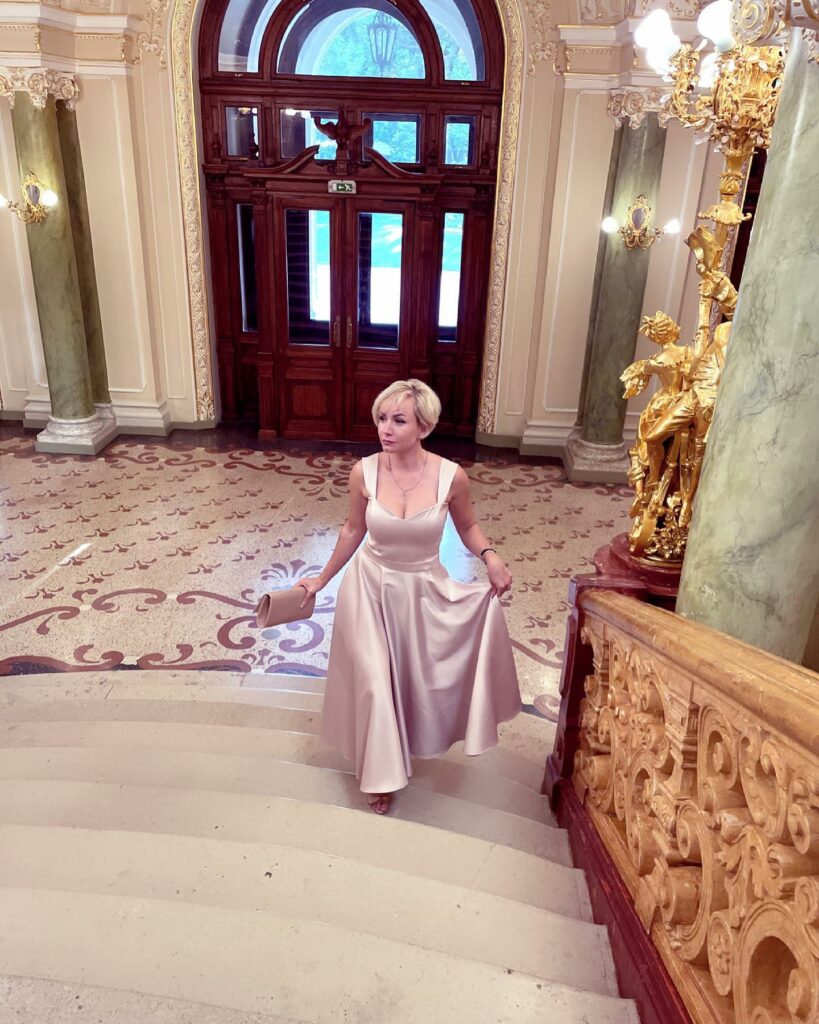
Yevhenia says she’s very demanding of herself, so when the big war broke out, her artistic work ended. She tried to paint again, but the emotions became completely different. She had been helping the military since 2014, but she didn’t consider it volunteering then. However, on February 24, 2022, like millions of other Ukrainians, she had to make a choice:
“Apparently, on February 24, 2022, everyone who didn’t join the Armed Forces became a volunteer. It was my fate, too, because I had to decide what to do: run away or meet it with dignity? And that’s how it all happened.”
At the beginning of the big war, the artist took up evacuation. She helped to evacuate women and children from Mykolayiv, which was half-encircled in late February. “In the morning, we would take one group along the Odesa highway to the border with Moldova and returned home. Two or three hours of sleep – and a new evacuation,” Yevhenia says. “At some point, I realized that it all worked (evacuation – ed.), everyone drove everyone, everything was fine, everything was good, and I have a brother there (at the front – ed.) and I had to take him some socks.”
Her brother Petro is a serviceman of the 10th Mountain Assault Brigade “Edelweiss”. The unit fought the enemy in the Kyiv region. They had to get to the tank unit through unknown roads and fields, where there had been fighting just days before.
“But of course, the main thing was not the socks, the main thing was, unfortunately and horrifyingly, at least to say goodbye. I stopped and understood what I needed, because I can’t leave the country, because I don’t want to leave, and there’s a very high chance that I’ll stay here in this land. And he’ll stay there. Because I wasn’t sure that we would survive, I thought that we were done for. And I was going to say goodbye,” the woman recalls.
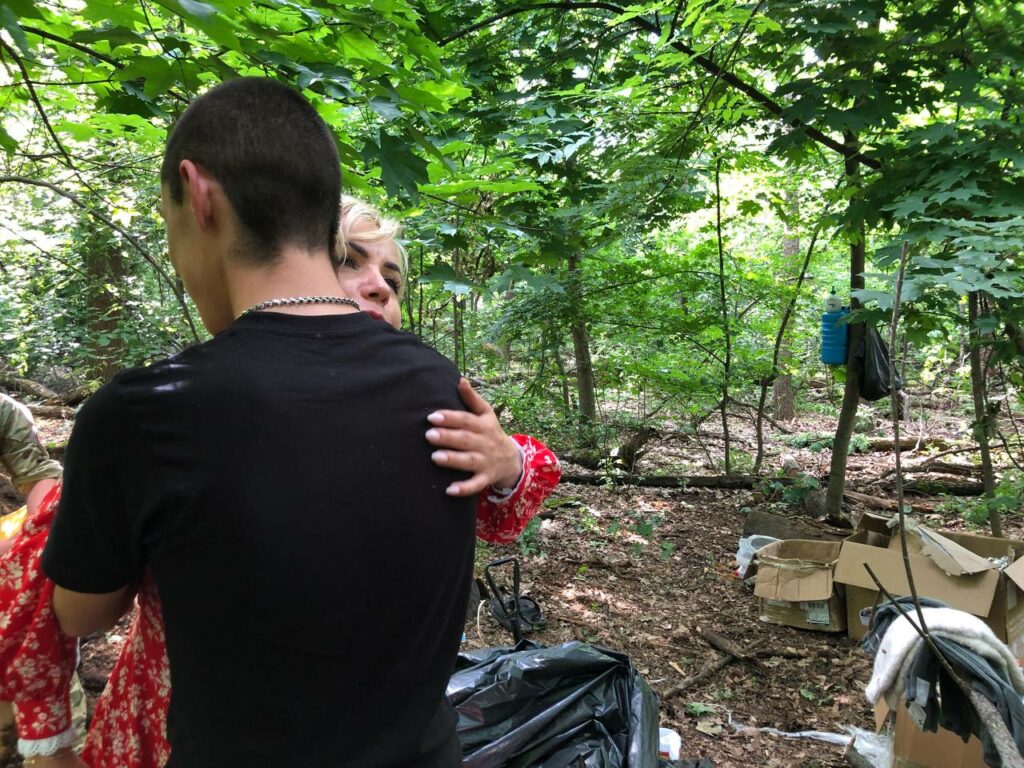
This is how the military volunteer Yevhenia Kim’s story began. She was heading from the northern front, following her brother’s unit, to the Donetsk region. Apart from her brother, the volunteer has two sons at the front, her ex-husband, his brother and his wife. During the trips, she managed to meet other military units that also needed help.
“It works like this – for example, your brother is fighting there, he says: “Zhenya, we need to find somewhere, maybe you can help, I know you have a lot of friends.” You start looking for something. Then you get a call from a friend, who also joined the army, and he also needs something. You go there, give everything, they run up to you and say: “Listen, we need this and that. That’s how it happens,” says the volunteer.
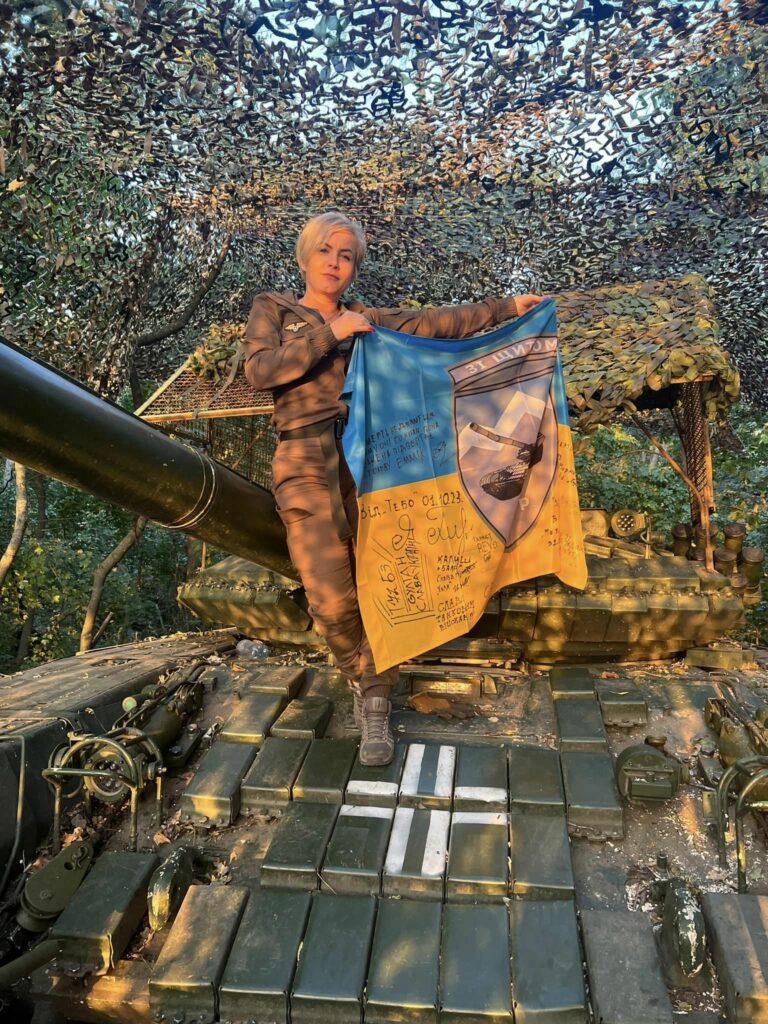
The woman says that when the first emotions caused by the beginning of the full-scale war subsided and she managed to organize various aid to the units, she was faced with a question – how to further develop in volunteerism: “This is a development, a volunteer develops, it is also a profession. If in the first weeks we ran around like chickens with their heads cut off, not knowing where to fit in and what to do, now we develop, learn, try to master another profession, in my case it’s a paramedic.”
Yevhenia’s friend was wounded in the battle. The fighters couldn’t be evacuated and taken to the hospital in time. This was an impetus for a new area in the volunteer’s work – searching for and delivering evacuation vehicles and paramedics to the front.
“There’s simply not enough help there. And a fighter’s survival depends on timely assistance. That’s why it’s very important, we need ambulances and a lot of them, we need teams, we need to help,” says the artist.
Over two and a half years of military volunteering, the number of units assisted by the foundation team and Yevhenia has expanded. It all started with the delivery of ambulances to Donbas. The units are moving, and the project is expanding along with that, says the volunteer. Today, through a Swedish foundation with which Yevhenia cooperates, about 60 vehicles have been delivered to the front and used to evacuate the wounded. They are used in the Donetsk, Kharkiv, Zaporizhzhia and Kherson sectors.
However, it was not enough for the volunteer to be involved in the logistics of evacuation vehicles and head the project – she personally joined the evacuation of the wounded at the front.
“I have a habit of being a professional in what I do. How can I bring the military something I don’t understand? First, it was tactical medicine courses. And I found it interesting. I need to be involved in the evacuation as a person, because I’m always interested in development; I try to improve my knowledge. This is my delicate connection with the people who made the decision to defend us at the cost of their lives. I’ve also chosen to defend our people, but I do it in a different way. When I hold his (the wounded – ed.) hand, this is a human attitude, when they defend us, I defend them,” the woman explains.
You have to see all sorts of scary and creepy things during the evacuation, but you get used to everything, she says: “I’m a very strong empath, and in a matter of seconds I can put myself in another person’s shoes and even feel their physical pain. It was the hardest thing for me, I realized that the painkiller I had injected didn’t help at that level of pain, but not knowing if surgery was needed, I couldn’t give more painkillers. I just sat down and explained that I couldn’t do more, that we were about to reach the stabilization point, and the doctors would do everything. But I realized that the main thing we forget about because of the feeling of pity is the feeling of pride in who we are and who these guys are.”
The volunteer often found herself in danger, under fire, and had to hide from enemy drones during evacuations in the combat zone. She says that fear is a natural feeling, but not always noticeable due to the level of adrenaline: “We also grew up on books and films about war. I remember the time when everyone said that you can survive anything, except for the war. I didn’t understand, but now I understand what it means when they wish you a clear sky above your head.”
In July, Yevhenia visited Sweden, where she and representatives of the OperationAid, the organization she works with, participated in the Almedalen week, which brings together politicians, business and mass media representatives and ordinary people. During the informal communication, she had a chance to talk to Micael Bydén, the Supreme Commander of the Swedish Armed Forces and the Minister for Defense Pål Jonson. The volunteer traveled to the Scandinavian Peninsula on one of the evacuation vehicles operating at the front.
“I had a conversation with the Defense Minister, and he asked why evacuation was not carried out in armored vehicles. And we talked for quite a while that armored vehicles are very large vehicles. No matter how much armor is believed to be a very reliable protection, we already know what the enemy uses against us: ‘lancets’ that break even the tank armor, so an armored medical vehicle will be very visible and it’s dangerous. We talked about EW, and that it isn’t armor that guarantees life on the front, but EW systems. He got very interested in this, because such a war has never been fought before,” the volunteer says.
She went to Sweden with the intention to show the locals, at least remotely, how Ukrainians live amid the war, and to what extent everyone is exposed to danger here. At one of the events, the Ukrainians organized an improvisation. They turned on a siren, used smoke bombs, artificial blood and showed how paramedics work during shelling. They evacuated the “wounded” to an evacuation vehicle and then to a conditional stabilization point.
“We bandaged, stretchered and tourniqueted him. At the stabilization point, we demonstrated more qualified assistance provided there. It was a small demonstration, but, of course, it was shocking for people under a peaceful sky, they were stunned,” says Yevhenia.
The artist admits that she is in love with Donbas and enjoys what she does. Communicating mainly with soldiers, paramedics and volunteers in the East of Ukraine, she feels at home: “I feel free here. Russians are breathing nearby, and I feel real and free. I know why we are here, what unites us, and this is such a cool community I can’t live without.”
Author: Valentyna Hurova
*All photos courtesy of the author and Yevhenia Kim.
Supported by the U.S. Embassy in Ukraine. The views of the authors do not necessarily reflect the official position of the U.S. Government.

